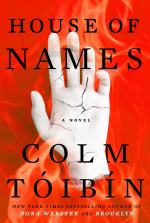|
This section contains 2,858 words (approx. 8 pages at 400 words per page) |

|
The Cyclical Nature of Trauma
By narrativizing a chain of murder that begins with Iphigenia, moves to Agamemnon and Cassandra, and ends with Clytemnestra, Tóibín comments upon the reciprocal nature of murder. As a result, he both pays heed to his source material (for such a perspective honors the curse placed upon the House of Atreus), and suggests that acts of evil breed further evil.
House of Names’ narrative is in many ways structured around acts of murder — the murder of Iphigenia, of Agamemnon, of Theodotus, of Mitros (Senior), of their families and, eventually, of Clytemnestra — and in this fashion, the novel pays heed to its source material while simultaneously presenting an argument stating that the nature of killing is reciprocal. For example: Clytemenstra is only driven to kill Agamemnon (and his war prize, Cassandra) after he murders their child, Iphigenia. Likewise, Electra orchestrates the...
|
This section contains 2,858 words (approx. 8 pages at 400 words per page) |

|




